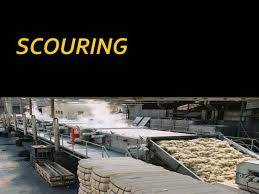### Why Colouring Clothes Has a Big Environmental Impact
**Start-up Firms Are Looking for Ways to Dye Clothes Using Less Water and Heat**
*5 Nov 2024, Asia*
The fashion industry is one of the largest contributors to environmental pollution, and one of its most resource-intensive processes is the dyeing of clothes. From the vast amounts of water used to the toxic chemicals that often end up in our rivers and oceans, the traditional methods of colouring garments have a substantial environmental footprint. However, a growing number of start-up firms are exploring innovative solutions to dye clothes with less water, energy, and harmful chemicals—offering a glimmer of hope for a more sustainable future in fashion.
In this article, we’ll explore why clothing dyeing is such an environmental challenge and how emerging technologies could revolutionize the industry.
---
### The Environmental Cost of Traditional Dyeing
The conventional process of dyeing clothes relies heavily on water, energy, and chemicals. According to the World Bank, the textile industry is responsible for 20% of global industrial water pollution, largely due to the waste produced during dyeing processes. The dyeing of fabrics typically requires vast quantities of water to dissolve dyes and rinse textiles, which then leads to wastewater runoff containing toxic chemicals.
The use of toxic chemicals is another significant issue. Many dyes contain hazardous substances like azo dyes, which can release carcinogenic compounds, posing risks to both workers and ecosystems. These chemicals often end up in rivers and lakes, polluting local water supplies and harming aquatic life.
Additionally, the dyeing process typically requires high temperatures and energy to set the colours, contributing to the fashion industry’s carbon footprint. In a world already grappling with climate change, the high energy consumption of traditional dyeing methods only exacerbates the industry's negative environmental impact.
---
### The Scale of Water Consumption in Dyeing
Water is one of the most critical resources in the dyeing process. Estimates show that around 100 to 150 litres of water are needed to dye just one kilogram of fabric. Considering that the global textile industry processes millions of tonnes of fabric each year, the cumulative water usage is staggering.
Much of this water is used in rinsing, where excess dye and chemicals are washed off the fabric. Unfortunately, the water used in these processes is often contaminated with harmful dyes and chemicals. In countries like India and China, which are major players in the textile industry, wastewater from dyeing factories can end up untreated in nearby rivers, causing long-term environmental degradation.
This environmental toll has raised concerns among consumers, prompting demand for more sustainable alternatives. In response, numerous start-up firms and innovators are focusing on developing new methods to dye textiles in a more eco-friendly manner.
---
### Innovations in Eco-Friendly Dyeing Methods
Start-ups in Asia and beyond are working to create solutions that significantly reduce the environmental impact of dyeing clothes. By embracing new technologies, they aim to solve the key issues of water usage, chemical waste, and energy consumption.
#### **1. Waterless Dyeing Technologies**
Several companies are pioneering waterless dyeing techniques that eliminate the need for vast amounts of water. One such innovation is the use of **supercritical carbon dioxide** (CO2) in dyeing. In this process, CO2 is pressurized to a point where it becomes a supercritical fluid, capable of dissolving dyes. The CO2 acts as a solvent, allowing dyes to penetrate fabrics without the need for water.
This method has several environmental benefits. First, it drastically reduces water usage, eliminating the need for rinsing and reducing wastewater. Second, CO2 dyeing uses less energy compared to traditional methods, as it doesn’t require high-temperature water baths. Companies using this technology, such as DyeCoo, have already gained attention for their ability to dye textiles efficiently and sustainably.
#### **2. Plant-Based Dyes and Natural Pigments**
Another solution is the shift to plant-based dyes and natural pigments. Traditional chemical dyes are often synthetic and derived from petroleum-based sources. Start-up companies are exploring the use of plant-based dyes made from flowers, fruits, and vegetables. These dyes are not only biodegradable but also have a much lower environmental footprint.
Natural dyes can be derived from sources such as indigo plants, pomegranates, and turmeric. These dyes have been used for centuries, and modern technology has found ways to make them more vibrant and stable. While natural dyes are not a universal solution for all fabrics, they offer a promising alternative for eco-conscious brands and consumers.
#### **3. Digital Printing and Laser Technology**
Digital printing is another emerging solution that reduces the environmental toll of textile dyeing. Traditional printing methods often require large amounts of water and chemicals. In contrast, digital printing allows dyes to be applied directly to fabric using a printer, which can reduce the need for excess dye and water. This technology enables greater precision and reduces waste, ensuring that only the necessary amount of dye is used.
Laser technology is also being used to create designs on fabric without the need for water-based dyeing at all. Lasers can burn patterns into the fabric, which eliminates the need for dyes entirely. This process is fast, energy-efficient, and produces minimal waste, making it a potential game-changer for the fashion industry.
---
### The Path Forward
While these innovations are promising, they represent just the beginning of the shift toward more sustainable textile production. The widespread adoption of these technologies will require industry-wide collaboration, investment, and support from both consumers and manufacturers.
Governments can also play a significant role by providing incentives for companies that adopt sustainable practices and regulating harmful chemicals used in the dyeing process. Public awareness and consumer demand for environmentally friendly products are crucial drivers of change, pushing brands to adopt greener alternatives.
---
### Conclusion
The environmental impact of clothing dyeing is a major concern for the fashion industry, but new innovations are providing hope for a cleaner, more sustainable future. Waterless dyeing, plant-based dyes, digital printing, and laser technology all present promising solutions to the industry’s environmental challenges.
As start-up firms continue to pioneer new ways to dye clothes with less water and heat, the fashion industry has the opportunity to drastically reduce its ecological footprint. If these technologies become more widespread, the global fashion industry could become a leader in sustainable manufacturing, helping preserve the planet for future generations.


